Wellington Architecture Awards – Winners Announced
Twenty-eight projects have received awards in the 2020 Wellington Architecture Awards.
Demonstrating the breadth of work undertaken by architects in Wellington, the winners in the peer-reviewed awards programme run by Te Kāhui Whaihanga New Zealand Institute of Architects include commercial buildings and office fit-outs, a school and a library, a dozen houses, a garden studio and one of the city’s most iconic Modernist buildings.
A feature of the awards is the number of projects that involve the sympathetic conversion of heritage buildings for contemporary use.
Awards jury covenor Shauna Herminghouse said the jury, which also included fellow Wellington architects Michael O’Brien and Shani Nelson, Auckland architect Gerrad Hall and Wellington landscape architect and urban designer Robin Simpson, said the jury had “the challenging but enjoyable task” of selecting winners from 65 entries.
“The stories behind many of the projects were amazing,” Herminghouse said. “The jury heard about clients’ strong desire for sustainable architecture and about projects that marked significant changes in the lives of individuals and communities.”
“We were delighted by the craft and expertise demonstrated across all scales of work,” Herminghouse said. “We were especially heartened to see a number of modest projects built at the rear of sections or on seemingy unbuildable sites, proving the value that architects can bring to the smallest of projects.”
Three awards were made in the Commercial Architecture category, one to the Bowen State Building, a 1959 Ministry of Works government building that has received a significant upgrade from Warren and Mahoney Architects.
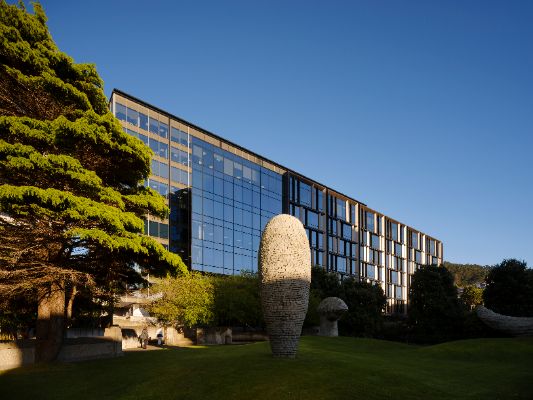
“The architects have respected the muscular form of the original building, and bronze façade detailing gives a nod to the adjacent Beehive,” the jury said. “This is a fine example of sustainability in action.”
Another winner in the Commercial category is Site 10, Kumutoto, designed by Athfield Architects.
The jury said the project “demonstrates the sensitivity required to design and deliver a contemporary building on such a prominent and significant waterfront site.”
The third Commercial Architecture winner is Antipodes Skincare Heritage Refurbishment by Architecture Workshop.
“This extensive refurbishment of a 1930s building superbly demonstrates how architecture can express, externally and internally, an organisation’s brand and ethos, and how design can be integrated successfully with a significant seismic upgrade.”
In the Education category, Thorndon School by McKenzie Higham Architects is the sole award-winner.
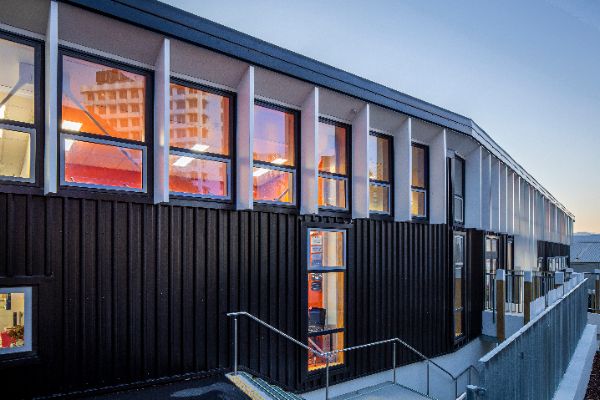
“The architecture helps create and express a sense of community,” the jury said. “The successful engagement with mana whenua and the prioritisation of children’s experiences is evident in the school’s sophisticated exterior and playful interior.”
A landmark building on The Terrace has been recognised in the awards’ Enduring Architecture category. Designed by architect Allan Wild and built in 1968, Jellicoe Towers “is an outstanding feature of the city’s skyline,” the jury said.
“The proportions of the seemingly impossibly svelte apartment building completed were a generous gesture to minimise obstruction of neighbours’ views,” the jury said. “The Modernist simplicity of the one-apartment per-floor tower, articulated by each floorplate extending beyond the face of the building, has stood the test of time.”
Two buildings have received awards in the Heritage category, one of which, Antipodes Skincare Heritage Refurbishment by Architecture Workshop, is also a winner in the Commercial category.
“A beautiful restoration of a heritage 1930s façade and internal entry stair, and the reactivation of the building as the base for New Zealand company Antipodes, has revived the building’s graciousness,” the jury said. “The refurbishment overlays new materials, textures, and themes with sensitivity, while accommodating a modern commercial environment.”
Harbour City Centre Annexe by Herriot Melhuish O’Neill Architects is “a transformative upgrade, both preserving and modernising a heritage building, and thereby extending its life well into the future,” the jury said.
One award was made in the Hospitality category. With The Marion, designed by foster+melville architects, “an aspirational client and a responsive architect came together to realise a vibrant urban hostel.”
“The upgraded existing commercial building and adjoining residence exude character, inside and out, and stand out from the eclectic mix of buildings on their street,” the jury said.
Seven awards were made in the Housing category.
Riverside Bach, by a.k.gv Architecture, is “a simple, unadorned, but skillfully composed bach designed and built to test a 7-metre x 7-metre model for future use as infill and affordable housing.”
The beauty of Paetawa Beach House by Andrew Sexton Architecture, the jury said, “comes through its craft and contrasts: a rugged timber and concrete exterior, and refined details and finishes throughout the interior.”
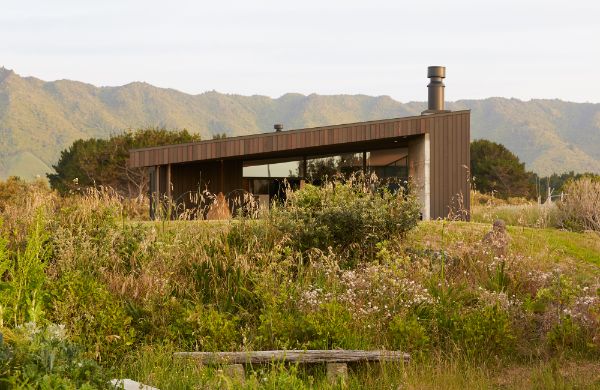
Robinson Crimp House by architecture RobinsonCrimp “successfully re-imagines what a low-cost, low energy dwelling can be,” the jury said. “What started as a shed renovation evolved into a new house which is the result of extensive research and interrogation of materials, and mastery of construction techniques and engineering.”
Vera Street House by Parsonson Architects is “a house on a subdivided section that certainly doesn’t shrink away at the rear of the site,” the jury said. “The corrugated iron elements, and subtle references to the client’s love of tramping, art, and the outdoors, give a tailored character to the house and have created a delightful living environment for the owner.”
Waikanae House II by Herriot Melhuish O’Neill Architects is “clad in a linear cedar and macrocarpa screen that opens up to sun and views of the Kapiti Coast. “The continuation of timber paneling through the interior of the house maintains the casual but clean feel of the exterior.”

10x10 House by Patchwork Architecture is an “adventurous and rigorously structured building that shows that steep sites in Wellington need not stand in the way of cleverly designed and built houses,” the jury said. “The design creates useable external spaces such as an expansive roof terrace with a playful ‘bus stop’ shelter that makes the climb up worthwhile.”
Patchwork Architecture won a second award for Hotbox. “Designed in close partnership with the client, the house is a great study in sustainability going hand-in-hand with buildability and design, all on a tight budget,” the jury said.
Four awards were made in the category of Housing – Alterations and Additions.
At 802 Parkin Apartment by foster+melville architects, “a sense of glamorous extravagance allows the project to transcend the spatial limitations of a 55 square-metre footprint and provide a characterful living environment,” the jury said. “Inhabiting this small but luxurious apartment is like being inside a mirrored jewellery box: surprises are revealed everywhere you look.”
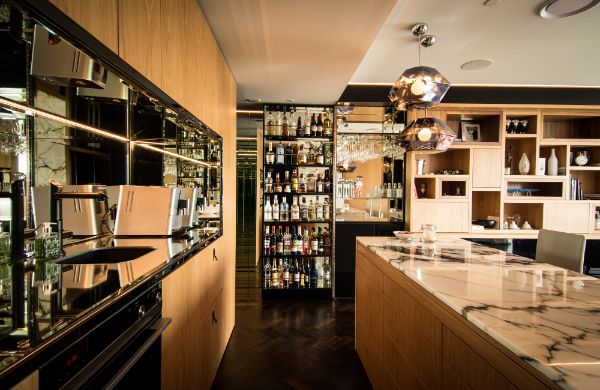
Carbonic Ice Apartment by John Mills Architects is a former fishing company warehouse that has been transformed into “a flexible series of spaces that accommodate both intimate living and larger entertaining spaces.”
“The patina of the original walls is retained in the outside courtyards,” the jury said, “and unexpected tranquillity is created within the transformed shell of an industrial building.”
Mount Victoria House Alterations by Mary Daish Architect is a project that has transformed a heritage villa through “a detailed examination of spaces and a sensitive understanding of the client’s way of living.”
The final award-winner in the Housing – Alterations and Additions category is Thorndon Villa Light Catcher Alteration by Lovell and O’Connell Architects.
“This carefully crafted small extension to an 1870s heritage villa transforms the existing house well beyond its small footprint,” the jury said. “Far from the traditional lean-to add-on, the extension takes advantage of every opportunity to admit light, facilitate cooking as a sociable pastime, and provide comfort and a connection to the rear garden.”
Two awards were made in the Housing Multi-unit category.
Adelaide Road Townhouses by architecture+ “establishes an identity based on New Zealand domestic architecture traditions,” the jury said. “The townhouses maintain a relationship to the local character of the streetscape through their scale and form. Excellent site planning balances and delineates public and private domains down the length of the site, providing outlooks for everyone.”
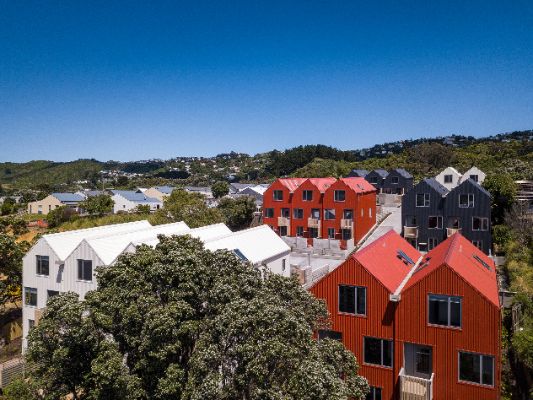
With Patetutu by Colab Architecture, “a long history led to the recent opportunity for an iwi/development company community housing development on the historic site of Paetutu Kainga,” the jury said. “Successful site planning balances the public realm with the private facilities for each townhouse, and cultural placemaking is a well-integrated design feature.”
Four workplace environments received awards in the Interior Architecture category.
FNZ Office Fit-out by Herriot Melhuish O’Neill Architects “takes full advantage of the extensive upgrade of a heritage building,” the jury said. “This fit-out is all about the light, which spills down through the central atrium and comes in from the sides to fill the deep floorspace and high floor volumes. A subtle palette and patterning complement the modernisation of the building.”
At Formway Design Studio, by Andrew Sexton Architecture and Harris Architects in association, “a simple palette of materials and concepts doesn’t compete with heritage space and modern products created within the studio; rather, it enhances and beautifully organises it,” the jury said.
Forsyth Barr Workplace by Warren and Mahoney Architects is “an elegant fit-out that makes it evident just how much the company values its clients”, and Greenwood Roche by Custance Associates “uses highly crafted design to open up the entire workplace to clients,” the jury said. “An elegant palette of materials, including custom acoustic ceiling panels, creates a unified layering of elements from the front door through to back-office amenities.”
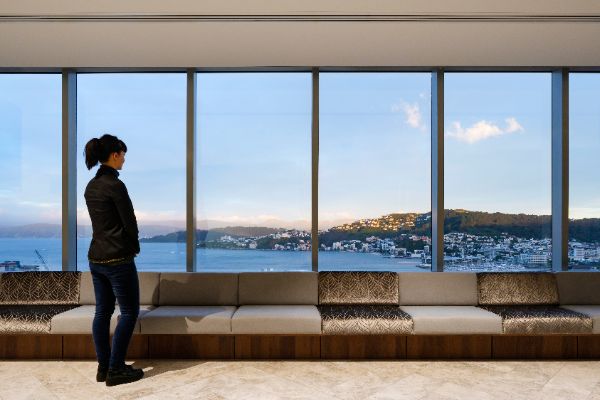
One project received an award in the Public Architecture category. Waitohi – Johnsonville Library and Community Hub by Athfield Architects “sets a benchmark for a growing community,” the jury said. “The project is an outstanding outcome of a successful consultation process, and has created a real civic heart for the Johnsonville town centre.”
Two awards were made in the Small Project Architecture category. Inhabiting First Light Tiny Home by First Light Studio is “like living in one interconnected, interlocking piece of joinery,” the jury said.
“The design is pure, uncluttered, generous, and well-articulated. The house is a great example of resolving design down to the millimetre when it counts.”
Herald Street Garden Studio by Parsonson Architects is “a delightful gem of a studio that introduces a contemporary design language to the tradition of a sleep-out/studio down the back of the section.”
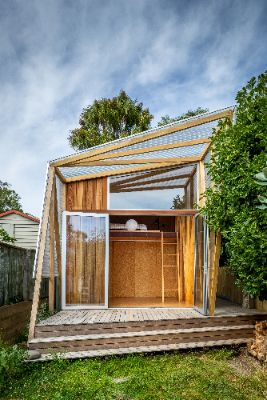
“This is liveable, approachable, and attainable high-quality design,” the jury said. “It is a brilliant example of the relevance of architecture to everyday living on tight urban sites.”
The 2020 Wellington Architecture Awards is a programme of Te Kāhui Whaihanga New Zealand Institute of Architects, supported by Resene.


 Gordon Campbell: On Why We Can’t Survive Two More Years Of This
Gordon Campbell: On Why We Can’t Survive Two More Years Of This Peace Action Ōtautahi: Bridge Of Remembrance Peace Protest
Peace Action Ōtautahi: Bridge Of Remembrance Peace Protest National Wetland Trust: Public Asked To Help Prevent Fires In Wetlands This Summer
National Wetland Trust: Public Asked To Help Prevent Fires In Wetlands This Summer Lillian Hanly, RNZ: The Year In Politics - Stories That Dominated The Headlines In 2024
Lillian Hanly, RNZ: The Year In Politics - Stories That Dominated The Headlines In 2024 Waikato Regional Council: Studies Open Door To Mercury Islands Underwater World
Waikato Regional Council: Studies Open Door To Mercury Islands Underwater World Office of the Privacy Commissioner: Christmas Is About Giving, But Don’t Give Up Your Privacy
Office of the Privacy Commissioner: Christmas Is About Giving, But Don’t Give Up Your Privacy The Rail Advocacy Collective: Chris Trotter - Running Us Off The Rails
The Rail Advocacy Collective: Chris Trotter - Running Us Off The Rails


